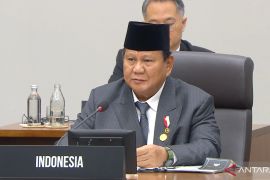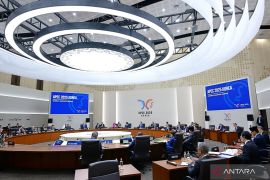It was cited in a new APEC report issued by the APEC Energy Working Group and received here on Saturday.
Whilst industry continues to be the largest energy-consuming sector, two sectors – transport and building – will trigger increased energy demand, according to the APEC Energy Demand and Supply Outlook.
"Demand in the transport and building sectors is estimated to rise by some 30 percent, partially due to increasing incomes. Efficient policies will be critical to softening this growth in demand," Dr Jyuung-Shiauu Chern, the lead shepherd for the APEC Energy Working Group, stated.
Fossil fuels are projected to continue to constitute over 60 percent of the energy mix for the next three decades in the Asia-Pacific region, which comprises almost two-thirds of the global demand. Increased production and trade in natural gas and lower prices can facilitate its broader use as a substitute for coal.
"Significant progress is required to increase energy efficiency and the use of renewable energy and carbon capture and storage. This will help reduce the region’s greenhouse gas emissions to 8.5 gigatonnes by the year 2050 – a level consistent with the 2015 Paris Agreement ambitions," Dr. Kazutomo Irie, president of the Asia Pacific Energy Research Centre (APERC), who prepared the report, stated.
"Some 16 economies are projected to store 22 gigatonnes of carbon, mostly from the electricity sector, starting in 2030," Kazutomo remarked.
To meet this rising demand for electricity, APEC economies will require over 3,200 gigawatts of new power plant capacity. As use of renewable energy rises, economies should support variable production through quickly dispatchable thermal capacity and energy storage.
In 12 economies, including China, Japan, and the United States, pumped hydro storage is projected to enable support of variable renewables.
Even as growth of transport use is driving demand, the sector is projected to witness a shift towards electrification. China is expected to increase its adoption of electric vehicles by 17 percent yearly. However, electricity is projected to represent only five percent of the transport fuel demand.
In the building sector, implementation of the Minimum Energy Performance Standards can complement endeavors to label appliances in accordance with their efficiency capacity, including for air conditioning systems.
Broader application and enforcement of these regulations will bring the region nearer to its energy intensity reduction target of 35 percent for 2035 as compared to 2005.
Reporter: Yuni Arisandy Sinaga
Editor: Gusti Nur Cahya Aryani
Copyright © ANTARA 2019











